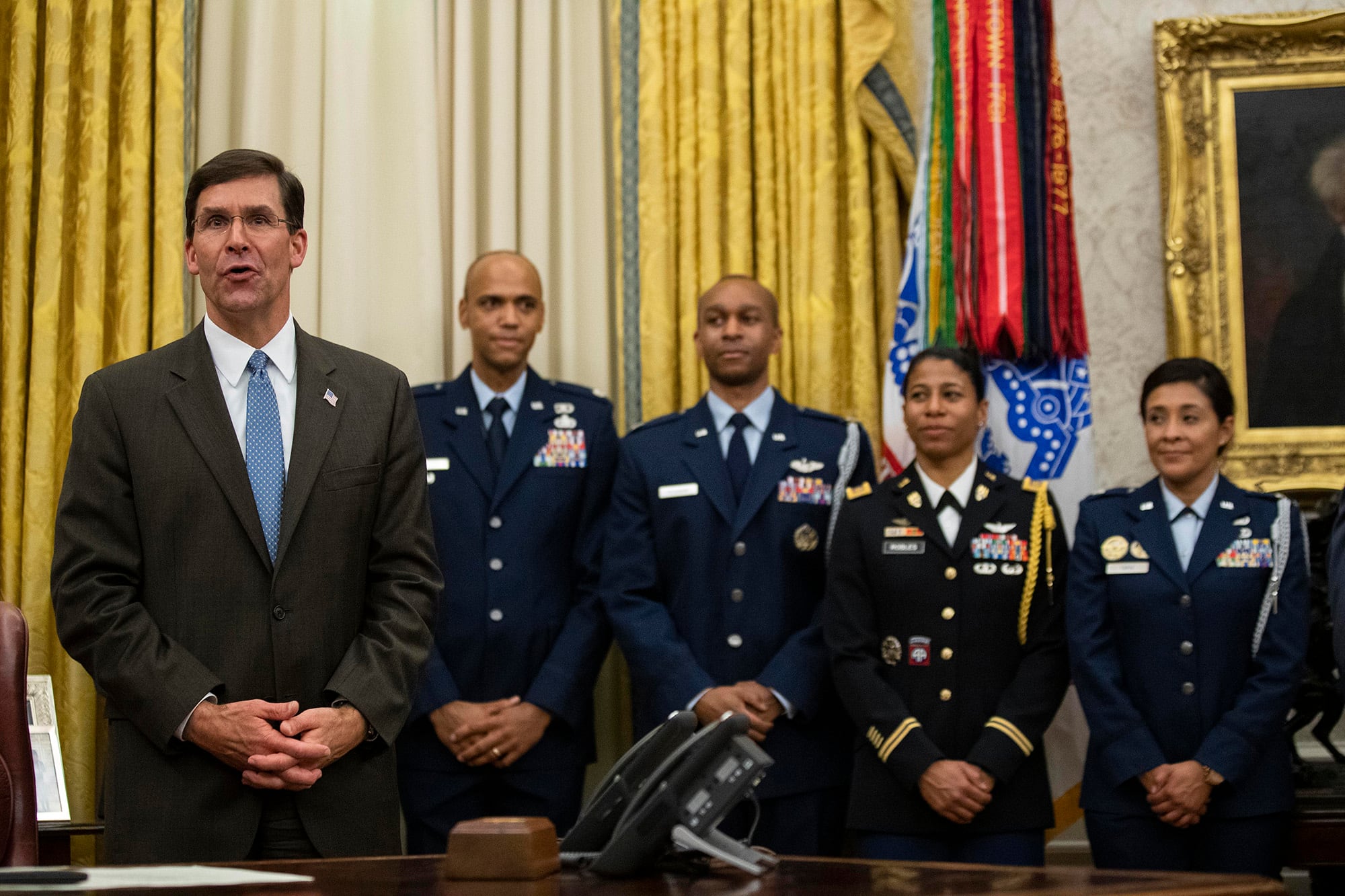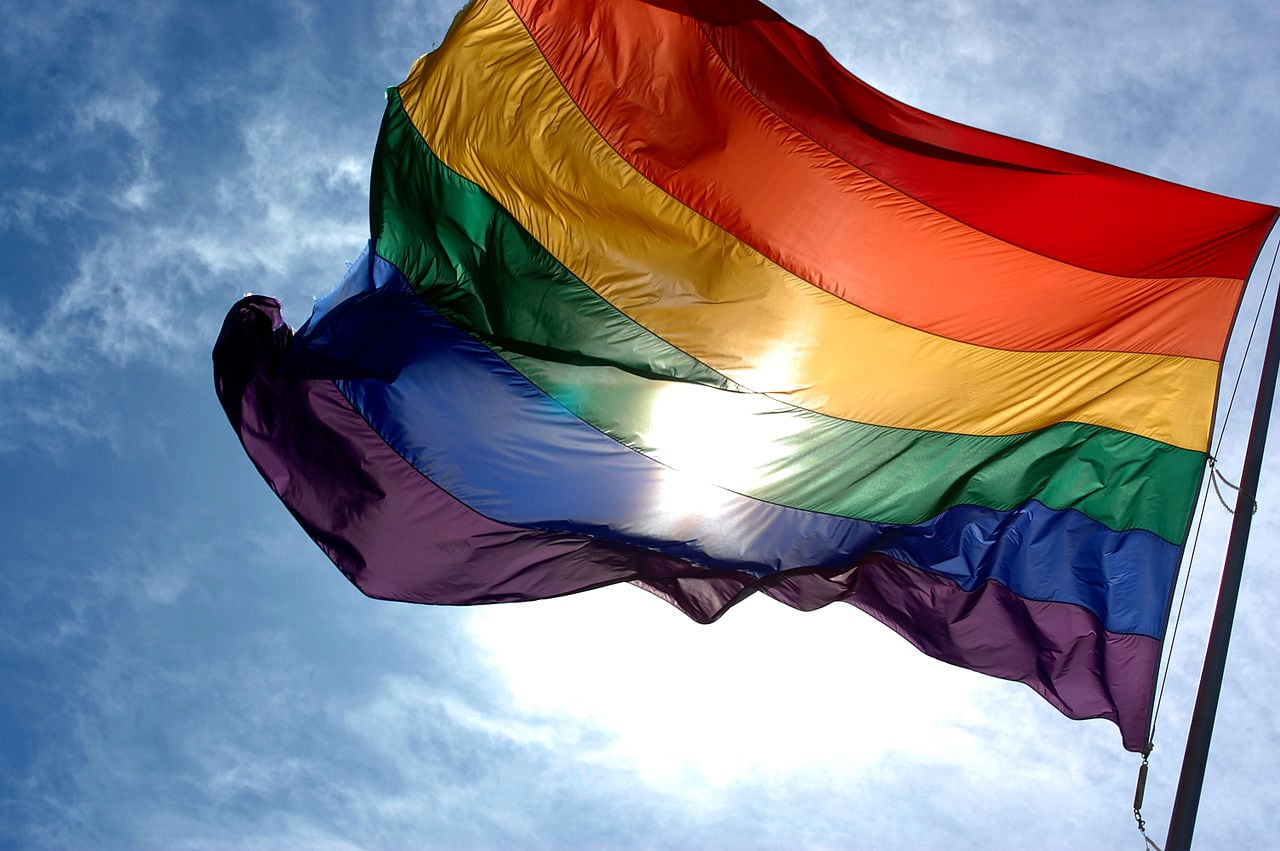In the wake of the late May killing of George Floyd, an unarmed Black man prosecutors say was murdered by a white Minneapolis police officer, nationwide protests and demonstrations stirred up feelings across the military services, up to and including the Pentagon’s boss.
Defense Secretary Mark Esper said Wednesday that the moment was a wake-up call not only for America, but for himself, and has shaped his recent efforts around diversity and inclusion in the Defense Department.
“I don’t think what everybody appreciated — at least me, personally — is the depth of sentiment out there among our service members of color, particularly Black Americans, about how much the killing of George Floyd — and the other incidents that preceded it and succeeded it — had on them and what they were experiencing in the ranks as well,” Esper said during a virtual appearance at the Aspen Security Forum.
In more than half-a-dozen sensing sessions during trips to bases around the country, Esper has sat down with troops of different ranks and backgrounds for feedback on the state of diversity and inclusion in the military.
“The good news, or maybe the bad news is, it’s all consistent,” he said, regardless of service or location, in story after story.
Following public messages from senior leaders, starting with Chief Master Sergeant of the Air Force Kaleth Wright, DoD and its branches began standing up task forces to study the state of their organizations and make changes.
“We took it upon ourselves as a leadership team, that we had to do better. We must do better,” Esper said. “DoD had a history of leading on these issues and it was time to step up again, to really capture this moment.”

In June DoD convened a team, headed up by Air Force Secretary Barbara Barrett and Senior Enlisted Adviser to the Chairman Ramon Colon-Lopez, to come up with ideas that can be executed quickly.
Their first report came back in mid-July, suggesting a review of the Equal Opportunity program, removing photos from promotion packets and looking into whether grooming standards are biased against certain ethnicities, among other directives.
Esper also in July issued a new policy that would ban the display of the Confederate flag in public and common areas on military installations, though it has faced backlash for also prohibiting displays of diversity and inclusion, including the LGBTQ pride flag.
Also in July, Army Gen. Mark Milley, the Joint Chiefs chairman, voiced his support for exploring a plan for renaming 10 Army posts honoring Confederate generals.
RELATED

At the same time, the Army, Air Force and Navy have moved out on their own task forces to examine what within their own culture and policies needs to change.
Both internally and externally, the military has been lauded for its efforts on integration, particularly as it allowed service members of all racial and ethnic minorities to begin serving at a time when the Jim Crow South was still alive and well.
But the policies on paper have not always borne out in individuals’ and groups’ experiences while serving, from treatment by their chains of command to their career opportunities.
While the demographics of military recruits tend to reflect the broader U.S. population, or sometimes over-represent groups, research has found that senior leaders become more narrowly white and male toward the top.
“I think the murder of George Floyd was a wake-up call ... it was a wake-up call for us, as well, as leaders,” Esper said. “We know we’re not immune to what is happening in broader society, that society that we serve.”
Meghann Myers is the Pentagon bureau chief at Military Times. She covers operations, policy, personnel, leadership and other issues affecting service members.




